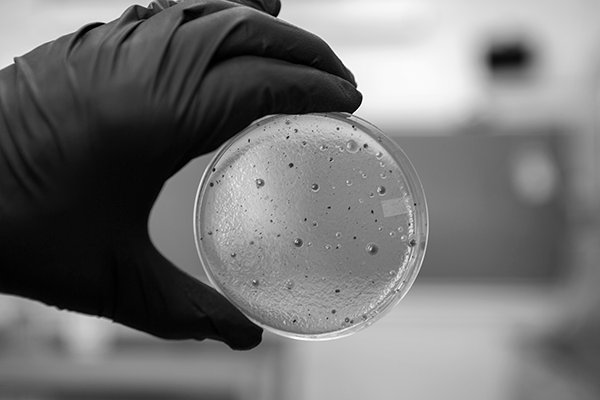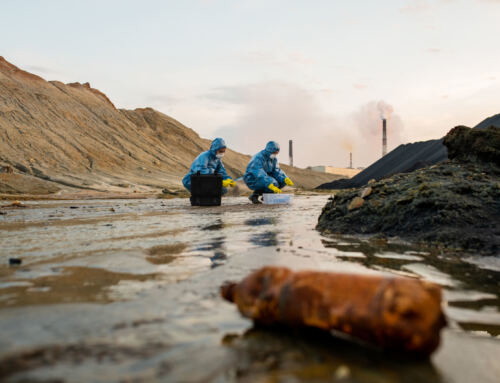The digestive process can be regarded as a journey. From the mouth until it becomes feces, the food we ingest travels through different chambers with wildly different conditions and is populated by different microorganisms. The physicochemical conditions in the different parts of the gastrointestinal tract shape these microbial communities. They will have an impact on the transformation of the food during the digestive journey.
This blog post will take you on a trip through the digestive process. We will talk about its multiple stops, their differences, and their inhabitants, often involved in health and disease.
Itinerary
The first stop in this multi-stage journey is the oral cavity, which comprises different environments such as tonsils, teeth, gums, tongue, cheeks, and soft and hard palates. If we compare the mouth to a city, these different environments would represent the different districts, all sharing common characteristics. Still, each has its special flavor and slightly different populations. In the mouth, the ingested food is mixed with saliva, which will lubricate it, facilitating the movement through the rest of the gastrointestinal tract. The saliva also contains the oral endogenous microbial community and enzymes that kickstart digestion.
The bolus will then continue through the esophagus. This muscle tube connects the oral cavity and the stomach, pushing using peristaltic movements (contractions of the muscles in a wave-like fashion). Research of the microbiota revealed a significant overlap between the one found in the oral cavity and here, with genera such as Streptococcus or Prevotella.
The first significant change in landscape occurs in the stomach. The presence of proteolytic enzymes and the dramatic reduction of pH due to the gastric acids enhances the chemical digestion of the ingested food while simultaneously inhibiting the proliferation of most pathogens. However, some pathogens might be able to survive these conditions and have pernicious effects on human health, such as Helicobacter pylori, which is linked to ulcers.
The small intestine is the next destination. It comprises three parts: the duodenum, which is connected to the stomach, and a similar microbial community, the jejunum and ileum. It is the ileum where most of the nutrient absorption and digestion take place. In this part of the journey, extra companions join the party, receiving the bile salts that have been accumulating in the gallbladder and pancreatic enzymes. Small, readily available molecules, such as carbohydrates, are absorbed in the first sections of the small intestine. The community there is dominated by facultative anaerobic (able to grow with or without oxygen) fast-growing bacteria, like Streptococcus, Prevotella, or the famous Escherichia. However, as they move down the small intestine, the communities change towards a more diverse and complex community (containing a wide range of microbial species).
The last leg of this trip is the colon, which is divided into the cecum, ascending, transverse, descending, sigmoid, and rectum. Here, the bolus traversed the small intestine, where small, simple molecules were absorbed, arrives. Complex molecules remain within the colon, necessitating the collaboration of various microbial species for breakdown and processing. As a consequence, diverse and thriving microbial communities thrive in this environment. A stratified mucus layer covers the colon, and whereas the inner part is designed to exclude microorganisms, the external layer is loose and susceptible to degradation by organisms such as Akkermansia or Ruminococcus. There are steep gradients in oxygen concentration in the colon, both distally and transversally, which will shape the community. Once the cecum is passed, the bacterial community is vastly dominated by anaerobic bacteria, making up to 99% of the total. Genera, such as Bacteroides, Clostridium, and Bifidobacterium, are the most abundant, with Bacteroides sometimes making up to 30% of the bacteria in the gut. Oxygen tends to be lower in the lowest layer of the membrane and closest to the rectum. At the end of the process, bacteria species make up 60% of the feces dry mass.
Learning the gut language and culture
Microorganisms can talk among themselves in a completely different way to how humans communicate with each other. The mechanism by which bacteria communicate is known as “quorum sensing.” This communication generally encourages bacterial cells to promote their growth, but they can also induce the community to produce chemicals that will inhibit the growth of competitors. These chemicals include molecules, such as proteins (bacteriocins) and small molecules (like hydrogen peroxide or lactic acid). This approach effectively enhances the host’s health by preventing pathogen proliferation.
However, there is also two-way communication between the microbiota and the human host. Microorganisms have metabolic capacities that the human body can only dream of, like vitamins essential for our bodies’ normal functioning, such as vitamin K or biotin. The microscopic inhabitants can also produce molecules directly affecting the nervous and immune systems (neuro and immunomodulators). Microbial fermentations produce short-chain fatty acids (SCFA), such as propionate and butyrate, that are known to have anti-inflammatory properties and could also inhibit the proliferation of cancerous cells.
The interrelation goes even further, forming what is known as the gut-brain axis, connecting the gastrointestinal tract and the central nervous system. Production of SCFA travels in the bloodstream, reaching the blood-brain barrier (BBB), increasing the production of proteins that reinforce the integrity of the BBB and limiting the entry of potentially toxic metabolites into brain tissue.

What the future holds
The different parts of the gastrointestinal tract contain a myriad of different microbes. From the humble beginnings in the mouth to the bustling microbial metropolis that is the colon, each stage of the journey has shown different communities that interact among themselves, with the human host, and with the food bolus in different ways.
But even though this blog post ends here, it does not mean the exploration stops. There is a continuous push in research to discover the mysteries that lie in the gut microbiome, understand how deep its roots reach, and how we can use this intimate interrelation for our benefit.
References
Ruan, W., Engevik, M.A., Spinler, J.K. and Versalovic, J., 2020. Healthy human gastrointestinal microbiome: composition and function after a decade of exploration. Digestive diseases and sciences, 65, pp.695-705.
Gomaa, E.Z., 2020. Human gut microbiota/microbiome in health and diseases: a review. Antonie Van Leeuwenhoek, 113(12), pp.2019-2040.







